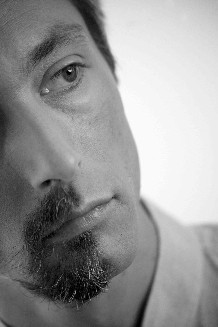Composto fra il 1968 e il 1970, Acustica, per “dispositivi sonori sperimentali” e altoparlanti, è uno dei più radicali e straordinari esempi della ricerca sonora di Mauricio Kagel.
Nei suoi continui tentativi di sfuggire ai vincoli e alle convenzioni della performance musicale tradizionale, Kagel ci guida in un mondo sonoro generato da strumenti esotici e invenzioni surreali.
Lo strumentarium di Acustica è immenso: va da strumenti di tutte le culture e di tutte le epoche storiche fino a invenzioni dello stesso Kagel, tutte notate meticolosamente.
Alcuni esempi tratti dalle note alla prima incisione, quella ormai fuori catalogo e rimessa in circolazione da AGP da cui potete scaricarla anche in formato FLAC (compressione senza perdita):
- Nail-Violin, uno strumento a frizione inventato alla metà del 18° sec. in cui delle barre di ferro di egual diametro ma differente lunghezza vengono messe in vibrazione con un archetto
- Roundpeg-Violin, come sopra, ma con barre di legno
- Scabella, sandali rumorosi che venivano indossati dal direttore di coro nell’antica Roma
- Hinged-board (Crepitacolo), un piatto di legno a cui sono attaccati vari pezzi di metallo che agiscono da batacchi quando il piatto viene agitato
- Linguelle metalliche messe in vibrazione da un albero a gomiti
- Puntine di vario tipo per esplorare approcci devianti alla bassa fedeltà: es. un grammofono in cui la puntina è sostituita da una lama di coltello infilata in un barattolo di latta
- Megafoni di vario tipo
- Soffiatore incrociato per la modulazione timbrica delle pagine di un libro
- Palloncini usati come risuonatori negli strumenti a fiato oppure come riserve d’aria
- Pipe-branch, un lungo tubo collegato a canne d’organo, alimentato da un cilindro pieno di aria compressa
- Sordine per strumenti a fiato dotate di altoparlante collegato a un registratore su cui sono incise note di strumenti a fiato
Il brano è costituito dalla sovrapposizione di due diversi piani:
- un nastro pre-registrato a 4 canali composto principalmente da suoni elettronici, ma anche strumentali e vocali non modificati
- le azioni degli strumentisti in numero variabile da due a cinque.
Oltre alle indicazioni per costruire gli strumenti, la partitura è composta da 200 schede (filing cards: le schede degli schedari) ognuna delle quali reca nell’angolo in alto a destra il simbolo dello strumento utilizzato.
L’ordine delle schede è completamente libero, ma l’azione indicata su ogni scheda è descritta con precisione. Anche il comportamento degli esecutori e la loro espressione facciale è dettagliata sulle schede. Gli esecutori decidono in che ordine utilizzarle, così come i loro tempi di entrata.
Nell’incisione pubblicata da AGP, registrata a Colonia nel 1971 sotto la direzione dello stesso Kagel, le prime due parti sono live e comprendono cinque esecutori e il nastro, controllato dal compositore. Le parti 3 e 4 sono un assemblaggio effettuato in studio. Non ci si aspetta che vengano ascoltate di seguito.
Gli esecutori sono: Christoph Caskel, Karlheinz Böttner, Edward H. Tarr, Wilhelm Bruck e Vinko Globokar.
Una versione di Tempo Reale.
Progettazione e drammaturgia: Jonathan Faralli, Francesco Giomi
Esecutori: Monica Benvenuti, Francesco Canavese, Jonathan Faralli, Francesco Giomi
Regia del suono: Damiano Meacci


 No, non si tratta della sonata 29 op. 106 di Ludwig Van, ma di un recente lavoro elettroacustico di
No, non si tratta della sonata 29 op. 106 di Ludwig Van, ma di un recente lavoro elettroacustico di